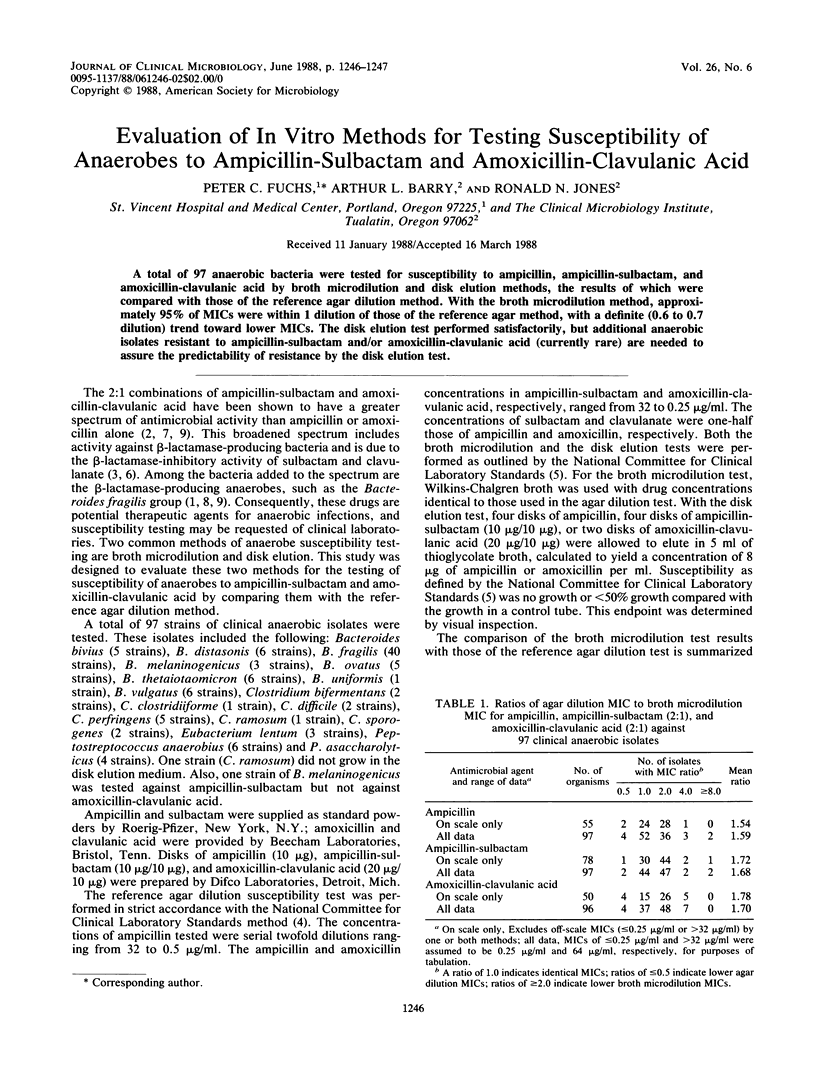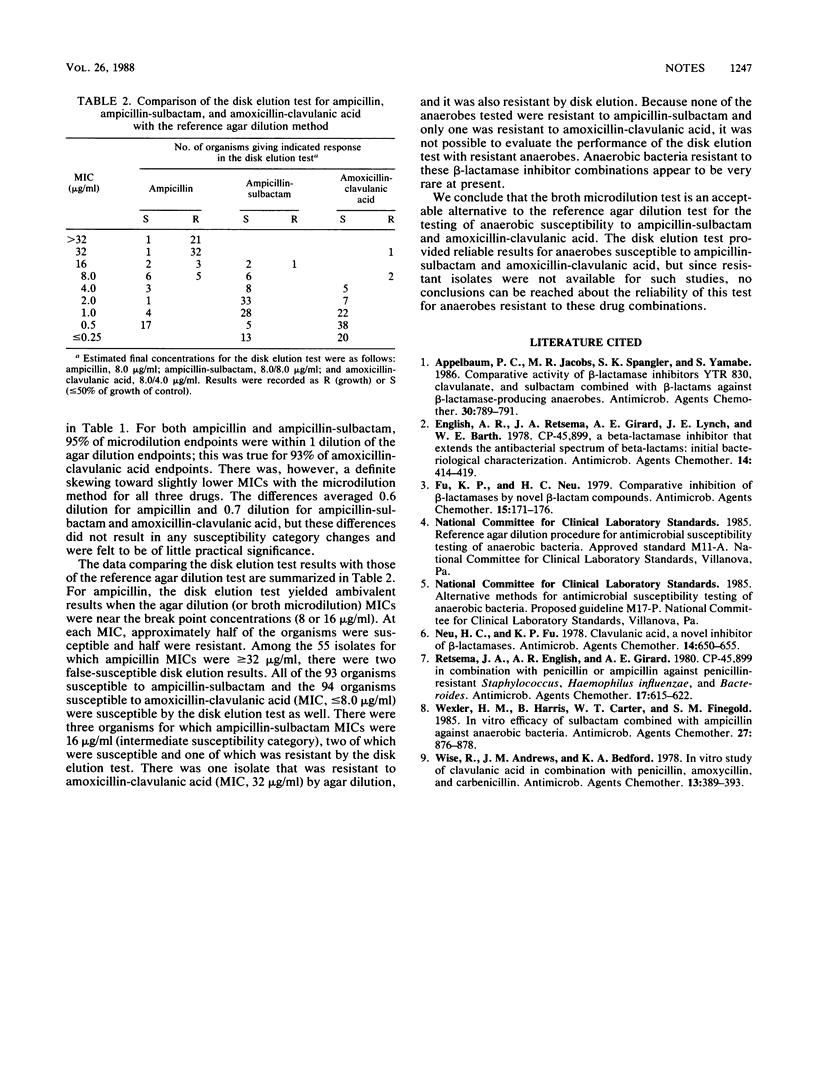Abstract
A total of 97 anaerobic bacteria were tested for susceptibility to ampicillin, ampicillin-sulbactam, and amoxicillin-clavulanic acid by broth microdilution and disk elution methods, the results of which were compared with those of the reference agar dilution method. With the broth microdilution method, approximately 95% of MICs were within 1 dilution of those of the reference agar method, with a definite (0.6 to 0.7 dilution) trend toward lower MICs. The disk elution test performed satisfactorily, but additional anaerobic isolates resistant to ampicillin-sulbactam and/or amoxicillin-clavulanic acid (currently rare) are needed to assure the predictability of resistance by the disk elution test.
Full text
PDF

Selected References
These references are in PubMed. This may not be the complete list of references from this article.
- Appelbaum P. C., Jacobs M. R., Spangler S. K., Yamabe S. Comparative activity of beta-lactamase inhibitors YTR 830, clavulanate, and sulbactam combined with beta-lactams against beta-lactamase-producing anaerobes. Antimicrob Agents Chemother. 1986 Nov;30(5):789–791. doi: 10.1128/aac.30.5.789. [DOI] [PMC free article] [PubMed] [Google Scholar]
- English A. R., Retsema J. A., Girard A. E., Lynch J. E., Barth W. E. CP-45,899, a beta-lactamase inhibitor that extends the antibacterial spectrum of beta-lactams: initial bacteriological characterization. Antimicrob Agents Chemother. 1978 Sep;14(3):414–419. doi: 10.1128/aac.14.3.414. [DOI] [PMC free article] [PubMed] [Google Scholar]
- Fu K. P., Neu H. C. Comparative inhibition beta-lactamases by novel beta-lactam compounds. Antimicrob Agents Chemother. 1979 Feb;15(2):171–176. doi: 10.1128/aac.15.2.171. [DOI] [PMC free article] [PubMed] [Google Scholar]
- Neu H. C., Fu K. P. Clavulanic acid, a novel inhibitor of beta-lactamases. Antimicrob Agents Chemother. 1978 Nov;14(5):650–655. doi: 10.1128/aac.14.5.650. [DOI] [PMC free article] [PubMed] [Google Scholar]
- Retsema J. A., English A. R., Girard A. E. CP-45,899 in combination with penicillin or ampicillin against penicillin-resistant Staphylococcus, Haemophilus influenzae, and Bacteroides. Antimicrob Agents Chemother. 1980 Apr;17(4):615–622. doi: 10.1128/aac.17.4.615. [DOI] [PMC free article] [PubMed] [Google Scholar]
- Wexler H. M., Harris B., Carter W. T., Finegold S. M. In vitro efficacy of sulbactam combined with ampicillin against anaerobic bacteria. Antimicrob Agents Chemother. 1985 May;27(5):876–878. doi: 10.1128/aac.27.5.876. [DOI] [PMC free article] [PubMed] [Google Scholar]
- Wise R., Andrews J. M., Bedford K. A. In vitro study of clavulanic acid in combination with penicillin, amoxycillin, and carbenicillin. Antimicrob Agents Chemother. 1978 Mar;13(3):389–393. doi: 10.1128/aac.13.3.389. [DOI] [PMC free article] [PubMed] [Google Scholar]


